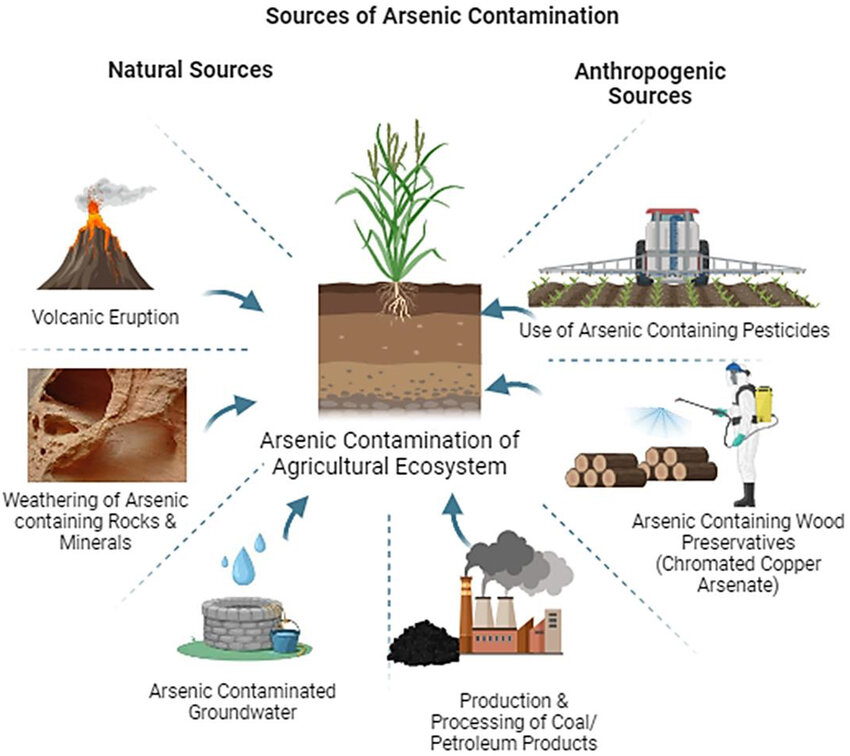Font size:
Print
Arsenic Contamination in India’s Drinking Water
Beyond Access: Ensuring Water Safety in Arsenic-Affected India
Context: Arsenic contamination in drinking water is a slow-onset disaster affecting millions across India, especially in the Indo-Gangetic plains. While access to water has improved, ensuring its safety remains a critical challenge.

What are the causes of arsenic exposure in water?
- Natural Geological Presence: Arsenic is naturally present in the sediments of the Indo-Gangetic Plain, especially in states like West Bengal, Bihar, Assam, and Uttar Pradesh. Over time, geochemical reactions in the aquifers cause arsenic to leach into groundwater.
- Over-extraction of Groundwater: Excessive pumping lowers the water table and disturbs natural equilibrium, releasing arsenic from sediments into drinking water sources.
- Poor Governance and Water Management: Inadequate regulation, lack of monitoring, and unreliable arsenic removal units (ARUs) worsen the situation. Absence of affordable, piped water forces reliance on contaminated groundwater sources.
What is the impact of arsenic exposure on water?
- Severe Public Health Crisis: Long-term exposure leads to cancer, skin lesions, stunted growth in children, and organ failure. Classified as a “slow-onset emergency”, its effects emerge over years, delaying public response.
- Economic Burden on the Poor: Arsenic-related illness costs an average ₹8,380 per rural household per year in affected areas — a significant sum for low-income families. In just two districts (Patna and Bhojpur), the annual economic burden exceeds ₹266 million (~$5 million).
- Erosion of Dignity and Social Stability: Sufferers face stigma and loss of productivity, especially in vulnerable and marginalised communities. Impacts are intergenerational, affecting education, income, and quality of life.
- Infrastructure Ineffectiveness: Jal Jeevan Mission’s piped supply may still deliver unsafe water if arsenic is not treated. Many ARUs underperform (some only removing 35–83% arsenic), leaving water above permissible limits.
What measures have been taken to address the challenges?
- Jal Jeevan Mission (JJM): India aims for universal tap water access by 2028, with 15.4 crore rural households already connected. Arsenic contamination has been cut from 14,020 habitations (2019) to 460 (2023), while Community Water Purification Plants (CWPPs) serve as interim solutions in affected regions.
- Technology Interventions: AMRIT technology, developed by IIT Madras, uses nano-scale iron oxy-hydroxide to remove arsenic, while real-time monitoring through GIS dashboards, mobile apps, and IoT sensors ensures effective water quality tracking.
- Community Engagement: ASHA workers and SHGs play a key role in spreading awareness and driving behaviour change, while willingness-to-pay studies reveal that 84% of households are ready to invest in safe water; additionally, colour-coded wells help families easily identify safe water sources.
- Regional Collaboration: Transboundary cooperation can draw from Bangladesh’s success with tubewell mapping and community filters, while adherence to WHO standards (10 µg/L) underscores the need for stricter norms and universal safe water access.

